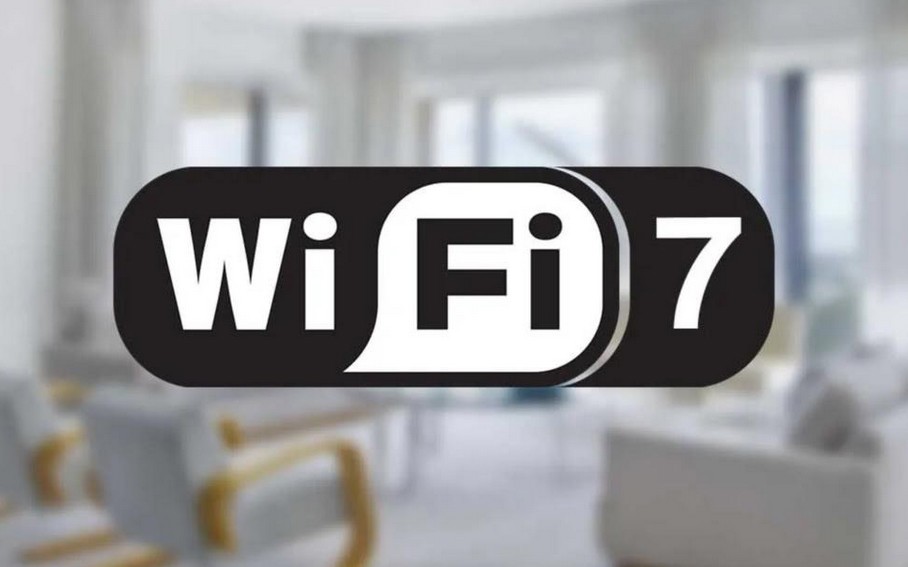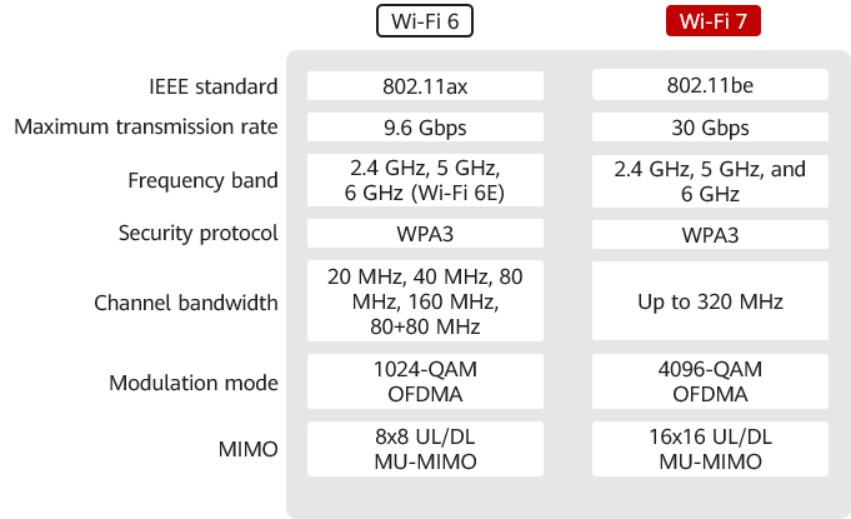2 月 6 日消息,全球知名咨询机构 Dell'Oro Group 报告指出,由于供应限制,2021 年下半年的 Wi-Fi 出货量(不包括中国)显著受限。随着 Wi-Fi 7 产品最早在 2023 年面世,预计用户将会直接绕过 6E。
“尽管制造商在 2021 年年中推出了 Wi-Fi 6E 产品,但这些产品要么没有,要么都缺货”该机构创始人、首席执行官和无线局域网分析师 Tam Dell 'Oro 表示,“我们对系统集成商的采访表明,用户要的是 Wi-Fi-6,而不是 6E。因此,如果企业必须优先考虑他们的生产,Wi-Fi-6 将是优先考虑的。由于供应限制,2021 年下半年 (不包括中国) 的 Wi-Fi 出货量严重受限。行业认为,在 2022 年底之前,限制条件不会放松。随着 Wi-Fi 7 产品最早于 2023 年上市,我们预计用户将绕过 6E。”
“除了供应限制影响了 Wi-Fi - 6E 的普及速度外,我们还了解到,在 6Ghz 频段内运行的法规也同样正在阻碍部署进程。合规流程尚未标准化,也不容易实施,”他表示。
Dell'Oro Group 给出的无线局域网五年预测报告的其他要点包括:
我们提高了对企业级无线局域网市场的预测,这是由于政府最近公布了促进技术进步的举措,从而使被压抑的需求延迟释放。我们预测,在未来五年内,企业级 Wi-Fi 设备和人工智能应用将投入 450 亿至 500 亿美元。
经过几年的市场份额增长,云管理接入点的出货量在 2021 年的市场份额没有增加。该报告深入研究了导致这一趋势的市场中出现的问题。
为什么我们需要 Wi-Fi 7?Wi-Fi 7与Wi-Fi 6相比有哪些变化?
Wi-Fi 7标准还将大大降低延迟,这将有助于提升每毫秒都很重要的应用体验,例如游戏。
不过,Wi-Fi 联盟仍“处于Wi-Fi 7标准化进程的早期阶段”,无法确切说明 Wi-Fi 7 标准何时最终确定。有传闻Wi-Fi 7 标准预计将“在 2022 年第二季度发布”。
根据这一时间表,该技术预计将于 2023 年面世。
华为是全球拥有Wi-Fi 7技术最多的公司,已经超越了高通和英特尔。据华为介绍,新一代Wi-Fi 7即将于2022年亮相。
华为官网显示华为在不断拓展更多的WiFi 7相关技术,相比WiFi 6,新的WiFi 7信道带宽高达320MHz,最高传输速率高达30Gbps。
WiFi 7(Wi-Fi 7)是即将推出的下一代Wi-Fi标准,也称为IEEE 802.11be——其拥有超高吞吐量(EHT)。Wi-Fi 7基于Wi-Fi 6,引入了320MHz带宽、4096正交调幅(QAM)、多资源单元(RU)、多链路操作(MLO)、增强型多用户多路复用等技术。输入多输出 (MU-MIMO) 和多接入点 (AP) 协调。借助这些前沿技术,Wi-Fi 7 提供了比 Wi-Fi 6 更高的数据传输速率和更低的延迟。Wi-Fi 7 预计将支持高达 30 Gbps 的吞吐量,约为 Wi-Fi 的三倍。
--华为
On February 6, the world-renowned consulting firm Dell'Oro Group reported that Wi-Fi shipments (excluding China) in the second half of 2021 will be significantly limited due to supply constraints. With Wi-Fi 7 products arriving as early as 2023, users are expected to bypass 6E directly.
"While manufacturers are launching Wi-Fi 6E products in mid-2021, they either don't have them or they're all out of stock," said Tam Dell 'Oro, founder, CEO and wireless LAN analyst at the agency. Interviews with system integrators indicate that users are asking for Wi-Fi-6, not 6E. So if businesses have to prioritize their production, Wi-Fi-6 will be the priority. Due to supply constraints, next year 2021 Wi-Fi shipments in half a year (excluding China) were severely constrained. The industry believes that restrictions will not be eased until the end of 2022. With Wi-Fi 7 products hitting the market as early as 2023, we expect users to bypass 6E."
“In addition to supply constraints affecting the speed of Wi-Fi-6E adoption, we also understand that regulations operating in the 6Ghz band are also hindering the deployment process. The compliance process is not standardized and not easy to implement,” he said.
Other takeaways from Dell'Oro Group's five-year wireless LAN forecast report include: We have raised our forecast for the enterprise wireless LAN market as pent-up demand is delayed by recent government announcements to promote technological advancements freed. We predict that $45 billion to $50 billion will be invested in enterprise Wi-Fi devices and AI applications over the next five years.
After several years of market share gains, cloud-managed AP shipments will not gain market share in 2021. The report delves into the issues that arise in the market leading to this trend.
Why do we need Wi-Fi 7? What changes does Wi-Fi 7 have compared to Wi-Fi 6?
The Wi-Fi 7 standard will also greatly reduce latency, which will help improve the experience of applications where every millisecond counts, such as games.
However, the Wi-Fi Alliance is still "in the early stages of the Wi-Fi 7 standardization process" and cannot say exactly when the Wi-Fi 7 standard will be finalized. There are rumors that the Wi-Fi 7 standard is expected to be released "in the second quarter of 2022."
According to this timeline, the technology is expected to be available in 2023.
Huawei is the company with the most Wi-Fi 7 technology in the world, surpassing Qualcomm and Intel. According to Huawei, the new generation of WiFi 7 will be unveiled in 2022.
Huawei's official website shows that Huawei is constantly expanding more WiFi 7 related technologies. Compared with WiFi 6, the new WiFi 7 channel bandwidth is as high as 320MHz, and the maximum transmission rate is as high as 30Gbps.
WiFi 7 (Wi-Fi 7) is the upcoming next-generation Wi-Fi standard, also known as IEEE 802.11be - which has an ultra-high throughput (EHT). Wi-Fi 7 is based on Wi-Fi 6 and introduces technologies such as 320MHz bandwidth, 4096 quadrature amplitude modulation (QAM), multiple resource units (RU), multi-link operation (MLO), and enhanced multi-user multiplexing. Input multiple output (MU-MIMO) and multiple access point (AP) coordination. With these cutting-edge technologies, Wi-Fi 7 offers higher data transfer rates and lower latency than Wi-Fi 6. Wi-Fi 7 is expected to support throughput of up to 30 Gbps, about three times that of Wi-Fi.
--Huawei's EDN Electronic Technology Design also reported last week that "MediaTek previews Wi-Fi 7 technology demonstration, which is 2.4 times faster than Wi-Fi 6E."
Why do we need Wi-Fi 7?
With the development of WLAN technology, homes and businesses are increasingly relying on Wi-Fi for network access. In recent years, emerging applications have put forward higher requirements for throughput and latency. Typical examples of these applications include 4K and 8K video (involving transfer rates of up to 20 Gbps), virtual reality (VR)/augmented reality (AR), online gaming (requiring latency less than 5 ms), telecommuting, online video conferencing, and cloud calculate.
Faced with such high demands, Wi-Fi 6 – the latest Wi-Fi standard at the moment – despite its commitment to improving the user experience in high-density scenarios, is not enough. So the IEEE is about to release a new amendment called IEEE 802.11be EHT, also known as Wi-Fi 7.
Wi-Fi 7 release time The IEEE 802.11be Task Group (TGbe) was officially established in May 2019, dedicated to the development of 802.11be (Wi-Fi 7).
The standard will be available in version 1 and 2. TGbe plans to release draft 1.0 of 802.11be in 2021, and version 1 will be available by the end of 2022. Version 2 is expected to launch in early 2022, with a release in late 2024.
Wi-Fi 7 and Wi-Fi 6 Wi-Fi 7 is based on the Wi-Fi 6 standard and introduces several new technologies. Below is a comparison of Wi-Fi 6 and Wi-Fi 7.
New to Wi-Fi 7 Wi-Fi 7 is designed to increase WLAN throughput to 30 Gbps with guaranteed low-latency access. To achieve this, the standard defines modifications to the physical layer (PHY) and the MAC layer. Compared to Wi-Fi 6, Wi-Fi 7 brings the following technological innovations: Bandwidth up to 320 MHz: The 2.4 GHz and 5 GHz bands are restricted and congested unlicensed spectrum. When running emerging applications such as VR/AR, existing Wi-Fi networks inevitably suffer from low Quality of Service (QoS). To achieve a maximum throughput of 30 Gbps, Wi-Fi 7 will support the 6 GHz band and expand new bandwidth modes including 240 MHz contiguous, 160+80 MHz non-contiguous, 320 MHz contiguous and 160+ 160 MHz non-contiguous.
Multi-RU: In Wi-Fi 6, each user can only send or receive frames on the RU allocated to them, which greatly limits the flexibility of spectrum resource scheduling. To solve this problem and further improve spectral efficiency, Wi-Fi 7 defines a mechanism that can allocate multiple RUs to a single user. In order to balance implementation complexity and spectrum utilization, the standard specification imposes certain restrictions on RU combinations. That is, small RUs (containing less than 242 tones) can only be combined with small RUs, and large RUs (containing more than or equal to 242 tones) can only be combined with large RUs. Small RUs and large RUs can be used in combination.
High-order 4096-QAM: The highest-order modulation supported by Wi-Fi 6 is 1024-QAM, which allows each modulated signal to carry up to 10 bits. To further increase the rate, Wi-Fi 7 introduces 4096-QAM, which enables each modulated signal to carry 12 bits. Under the same encoding, 4096-QAM in Wi-Fi 7 can achieve 20% faster rate than 1024-QAM in Wi-Fi 6.
Multilink mechanisms: In order to efficiently utilize all available spectrum resources, the industry urgently needs to introduce new spectrum management, coordination and transmission mechanisms in the 2.4 GHz, 5 GHz and 6 GHz frequency bands. TGbe defines multi-link aggregation technology, including enhanced multi-link aggregation, multi-link channel access and multi-link transmission MAC architecture.
More data streams and enhanced MIMO: Wi-Fi 7 increases the number of spatial streams from 8 to 16, and the theoretical physical transfer rate is more than double that of Wi-Fi 6. As data streams increase, Wi-Fi 7 supports distributed multiple-input multiple-output. That is, multiple access points can provide 16 data streams at the same time, which means that multiple APs need to coordinate with each other.
Multi-AP coordination: In the current 802.11 protocol framework, there is not much coordination between APs. Common WLAN features, such as automatic radio calibration and smart roaming, are vendor-defined. Multi-AP coordination aims to optimize channel selection and adjust the load between APs to achieve efficient utilization and balanced allocation of wireless resources. Coordinated scheduling among multiple APs in Wi-Fi 7 includes inter-cell coordination planning in time and frequency domains, inter-cell interference coordination, and distributed MIMO. In this way, the interference between APs can be reduced, and the utilization rate of air interface resources can be greatly improved. Multi-AP coordination can be achieved through various methods, such as Coordinated Orthogonal Frequency Division Multiple Access (C-OFDMA), Coordinated Spatial Multiplexing (CSR), Coordinated Beamforming (CBF), Wi-Fi 7 Application Scenarios Wi-Fi 7 Introduction The new features will significantly increase data transfer rates and provide lower latency. These highlights will help the development of emerging applications: video streaming video/voice conferencing online gaming real-time collaboration cloud/edge computing industrial IoT immersive augmented reality/virtual reality interactive telemedicine
上周EDN电子技术设计也报道了"联发科预告Wi-Fi 7技术演示,速度是Wi-Fi 6E的2.4倍"。
为什么我们需要 Wi-Fi 7?
随着WLAN技术的发展,家庭和企业越来越依赖Wi-Fi进行网络接入。近年来,新兴应用对吞吐量和时延提出了更高的要求。这些应用的典型例子包括 4K 和 8K 视频(涉及高达 20 Gbps 的传输速率)、虚拟现实(VR)/增强现实(AR)、在线游戏(要求延迟小于 5 毫秒)、远程办公、在线视频会议和云计算。
面对如此高的要求,Wi-Fi 6——目前最新的Wi-Fi标准——尽管致力于改善高密度场景下的用户体验,但它是不够的。因此,IEEE 即将发布一项名为 IEEE 802.11be EHT,也称为 Wi-Fi 7 的新修正案。
Wi-Fi 7 发布时间
IEEE 802.11be任务组(TGbe)于2019年5月正式成立,致力于802.11be(Wi-Fi 7)的开发。
该标准将在第 1 版和第 2 版中可用。TGbe 计划在 2021 年发布 802.11be 的草案 1.0,第 1 版将于 2022 年底可用。第 2 版预计将于 2022 年初启动,将于 2024 年底发布。
Wi-Fi 7 与 Wi-Fi 6
Wi-Fi 7基于Wi-Fi 6标准,引入了多项新技术。下面比较 Wi-Fi 6 和 Wi-Fi 7。

Wi-Fi 7 的新功能
Wi-Fi 7 旨在将 WLAN 吞吐量提高到 30 Gbps,并提供低延迟的访问保证。为了实现这一目标,该标准定义了对物理层 (PHY) 和 MAC 层的修改。与Wi-Fi 6相比,Wi-Fi 7带来以下技术创新:
高达 320 MHz 的带宽:2.4 GHz 和 5 GHz 频段是限制和拥塞的未授权频谱。在运行新兴应用程序(如 VR/AR)时,现有 Wi-Fi 网络不可避免地会遇到低服务质量 (QoS) 的问题。为了实现最大 30 Gbps 吞吐量,Wi-Fi 7 将支持 6 GHz 频段并扩展新的带宽模式,包括连续 240 MHz、非连续 160+80 MHz、连续 320 MHz 和非连续 160+ 160 兆赫。
Multi-RU:在 Wi-Fi 6 中,每个用户只能在分配给他们的 RU 上发送或接收帧,这极大地限制了频谱资源调度的灵活性。为了解决这个问题,进一步提高频谱效率,Wi-Fi 7定义了一种机制,可以为单个用户分配多个RU。为了平衡实现复杂度和频谱利用率,标准规范对RU组合施加了一定的限制。即小RU(包含少于242个tones)只能与小RU组合,大RU(包含大于或等于242个tones)只能与大RU组合。小 RU 和大 RU 可以组合使用。
高阶 4096-QAM:Wi-Fi 6 支持的最高阶调制是 1024-QAM,它允许每个调制信号最多携带 10 位。为了进一步提高速率,Wi-Fi 7 引入了 4096-QAM,使每个调制信号可以携带 12 位。在相同的编码下,Wi-Fi 7 中的 4096-QAM 比 Wi-Fi 6 中的 1024-QAM 可以实现 20% 的速率提升。
多链路机制:为了有效利用所有可用的频谱资源,业界迫切需要在 2.4 GHz、5 GHz 和 6 GHz 频段上引入新的频谱管理、协调和传输机制。TGbe定义了多链路聚合技术,包括增强型多链路聚合、多链路信道接入和多链路传输的MAC架构。
更多数据流和增强型 MIMO:Wi-Fi 7 将空间流数量从 8 个增加到 16 个,理论物理传输速率是 Wi-Fi 6 的两倍以上。随着数据流的增加,Wi-Fi 7 支持分布式多输入多输出。即多个接入点可以同时提供16个数据流,这意味着多个AP之间需要相互协调。
多AP协调:在目前的802.11协议框架中,AP之间没有太多的协调。常见的 WLAN 功能,例如自动无线电校准和智能漫游,是供应商定义的功能。多AP协调旨在优化信道选择并调整AP之间的负载,以实现无线资源的高效利用和均衡分配。Wi-Fi 7中多个AP之间的协调调度包括时域和频域的小区间协调规划、小区间干扰协调和分布式MIMO。这样可以减少AP之间的干扰,大大提高空口资源的利用率。多AP协调可以通过多种方法实现,例如协调正交频分多址(C-OFDMA)、协调空间复用(CSR)、协调波束成形(CBF)、
Wi-Fi 7 应用场景
Wi-Fi 7 引入的新功能将显着提高数据传输速率并提供更低的延迟。这些亮点将有助于新兴应用程序的开发:
视频流
视频/语音会议
在线游戏
实时协作
云/边缘计算
工业物联网
沉浸式增强现实/虚拟现实
交互式远程医疗
